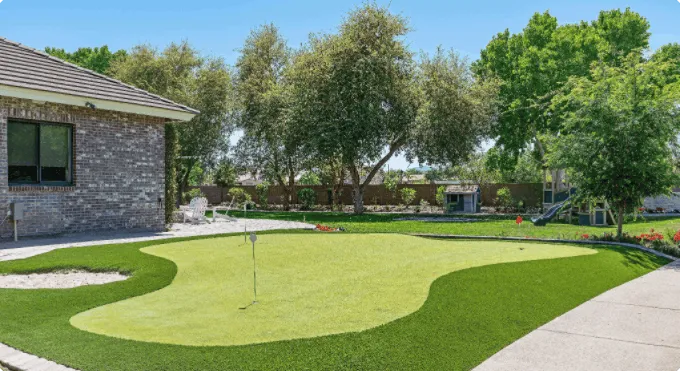
- Afrikaans
- Arabic
- Belarusian
- Bengali
- Czech
- Danish
- Dutch
- English
- Esperanto
- Estonian
- Finnish
- French
- German
- Greek
- Hindi
- Hungarian
- Icelandic
- Indonesian
- irish
- Italian
- Japanese
- kazakh
- Rwandese
- Korean
- Kyrgyz
- Lao
- Latin
- Latvian
- Malay
- Mongolian
- Myanmar
- Norwegian
- Persian
- Polish
- Portuguese
- Romanian
- Russian
- Serbian
- Spanish
- Swedish
- Tagalog
- Tajik
- Thai
- Turkish
- Turkmen
- Ukrainian
- Urdu
- Uighur
- Uzbek
- Vietnamese
Essential Guide to Turf Football Grounds and Their Maintenance Techniques
Nov . 10, 2024 16:18 Back to list
The Evolution and Importance of Turf Football Grounds
In the world of sports, few venues are as iconic or as crucial to a game’s integrity as turf football grounds. These meticulously maintained fields serve as the battlegrounds for some of the most thrilling athletic performances on the planet. The evolution of turf football grounds has significantly progressed over the years, driven by advancements in technology, a deeper understanding of player safety, and a growing emphasis on sustainability.
Traditionally, football grounds featured natural grass surfaces, which, while aesthetically pleasing, posed numerous challenges. The quality of the grass often depended on weather conditions and maintenance practices. Rain could turn the pitch into a quagmire, while dry spells could lead to hard, unplayable ground. This unpredictability affected the quality of play, with players sometimes struggling to find their footing or being forced to deal with uneven playing surfaces. As the demand for consistent and high-performing grounds grew, so did the interest in artificial turf.
The introduction of artificial turf in the 1960s revolutionized the football landscape. Initially developed for durability and low maintenance, synthetic surfaces provided a solution to the inherent issues of natural grass. Notably, the first widely recognized synthetic field was installed at the Astrodome in Houston, which led to the term Astroturf. However, early synthetic turf had some drawbacks, including an abrasive surface that could cause injuries. Yet, continuous innovations have led to the development of safer, more realistic turf options that mimic the feel of natural grass while offering the durability needed for high-intensity play.
Today’s state-of-the-art football grounds often combine the best of both worlds. Hybrid systems, which incorporate both natural grass and artificial fibers, are gaining popularity. These systems are designed to provide a solid root structure while minimizing the wear and tear seen on purely natural surfaces. Such advancements not only enhance the playing experience for athletes but also reduce the environmental impact by using less water and fertilizers compared to traditional turf management practices.
turf football ground

Moreover, the importance of turf football grounds extends beyond just improving play quality. They also play a pivotal role in player safety. A well-maintained pitch can reduce the risk of injuries, which is vital in a sport where every minute counts. The FIFA Quality Programme for football turf ensures that fields meet specific performance criteria, further promoting safe and high-standard play environments.
Notably, the aesthetic and professional aspects of turf football grounds must not be overlooked. Fans and players alike are drawn to visually appealing stadiums that showcase lush, green fields. These grounds are often the heart of community pride, hosting everything from local matches to international tournaments. High-profile events like the FIFA World Cup and the UEFA Champions League highlight the significance of presenting immaculate pitches, as they are integral to the spectacle of the game.
Sustainability is another critical factor in the ongoing evolution of turf football grounds. As environmental concerns escalate, many stadiums are adopting eco-friendly practices. This includes using recycled materials for construction, implementing water-efficient irrigation systems, and choosing turf options that minimize the need for chemical treatments. Such initiatives ensure that while the sport thrives, it does not come at the expense of the planet.
In conclusion, turf football grounds are much more than just patches of grass or synthetic fibers; they are the arenas where passion, skill, and athleticism converge. The evolution of these grounds reflects the broader changes within the sport, emphasizing safety, sustainability, and the quest for excellence. As technology continues to advance and the demands of the game evolve, turf football grounds will undoubtedly play a crucial role in shaping the future of football. Embracing these innovations is not just about enhancing the game; it’s about fostering a safe and sustainable environment for generations of players and fans to come.
-
The Benefits of Artificial Turf for Indoors
NewsJul.15,2025
-
How Artificial Grass Suppliers Ensure Quality Products
NewsJul.15,2025
-
Artificial Grass and Pets: A Space for Relaxation
NewsJul.08,2025
-
Balcony & Outdoor Decoration with Artificial Grass
NewsJul.08,2025
-
Best Indoor Artificial Grass for Home
NewsJul.07,2025
-
Best Pet Turf for Dogs: Safe & Durable Artificial Grass Options
NewsJul.07,2025
Products categories









